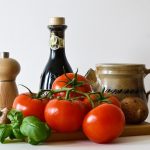
What are the drivers of the major food and nutrition trends for 2018 ?
Generally, we are all becoming more knowledgeable as we begin to understand nutrition more fully and the impact it has on our well-being. We are becoming more understanding and mindful as we pay particular attention to nutrition labels, the role of our packaging in food and to a certain extent the impact this aspect has on the environment. It’s most likely we will categorise food into different health sectors and actually discriminate between ‘good’ and ‘bad’ food more extensively.
Diets, particular types like the ketogenic version should come more to the fore. We expect the consumption of red meat to keep trending downwards. Alcohol may start to be a political issue like sugar reduction was. Will it be spoken of in the same breath as smoking, we don’t know. Clinical evidence is becoming very certain about the issues of chronic alcoholism, but small amounts of imbibing might actually be relatively good for you.
Mindfulness
Mindfulness has been a ‘hip’ item for many years. Anyone who explores the ideas more fully behind this approach to living will most certainly have assessed the way they approach eating. Whilst the approach has been bubbling under the surface in the guise of other related movements it is most likely that this year, we will spend more time assessing what and how we obtain and manage our nutrition.
Mindful eating is all about embracing an attitude that makes us think more carefully about time spent on food and nutrition. We will eat it more slowly, consider how it was obtained, its provenance and who supplied it. How the market reacts to this concept is still to be worked out. Marketing teams are fully conscious to involve the environment in the way food is communicated to the consumer. Now they will have to think about much wider features as we become more aware of the world and its needs.
At the moment, the concept seems quite airy-fairy, possessing little substance. We will not be hitting Tibetan bells and adopting the lotus position but we may well being seeking paths to reduce our stress and shed the debilitation of our emotional angst.
Sustainability becomes An Overused BuzzWord.
Sustainability has definitely been a key term in lots of advertising about food, mainly as a way of demonstrating responsible procurement. The danger has been its conversion to a buzz word, devoid of any real meaning. The year 2018 may well see the term lose its genuine impact. It is though wrapped up in mindfulness which hopefully will continue to keep us thinking carefully about how we alleviate the pressures on our food resources.
Food Becomes Medicine
Pharmaceutical trends have long shown a shift from patentable medicines to OTC (Over-The-Counter) products. The rise in herbal products continues backed up by increasingly more sophisticated clinical studies. Whilst one major issue is tackling variation in product quality, the role that key components in various herbs is a bit of a headache for pharmaceutical firms. Many of the most potent medicines for tackling a vast range of conditions appear to be on offer in much more friendly plant packaging.
Ketogenic Diets Embrace Dietary Fat Rather Than Cut It Out
The ketogenic diet is probably the most searched for dieting term on the internet. It’s been around for many years and is a feature of older, well established diets like the Atkins one. Here, the body enters a state of ‘ketosis’. The main fuel for metabolism is fat from dietary sources rather than carbohydrate. It is a very extreme form of dieting because all carbs are taken out of the diet which leaves just fat and a small amount of protein to be the main providers of anything ‘joule’ like. Expect to see new food products aimed at satisfying the requirement for ‘fat’ as opposed to carbs. There will be some interesting advertising out there to persuade us that fat is now beautiful, because we can use it to our advantage.
Veganism Loses Ground
This is not a blank statement designed to infuriate those of us who wish to adopt a responsible approach to our nutrition. Meat consumption, especially that of red meat continues a downwards trend. It may not be as rapid however as many would hope because diets are fickle subjects. If fat and protein are key aspects of diet, any sources will be acceptable. Dairy proteins are cheap but the product development opportunities feel a bit thin nowadays and any entrepreneur looking for an interesting brain exercise may well consider ways to improve the marketability of meat for example. Biltong and meat strips are now big business in sports supplements – an interesting highly flavoursome addition to the vast range of tubs of whey protein on offer.
Insects as foods will probably continue especially their use as a form of protein. It’s unlikely that whole insects will attract the same level of attention they did in 2016 and 2017 but bars will certainly make use of them. It’s not a food movement that will just disappear, that will be reserved for Hawaian cuisine which looked overhyped in many US quarters. It is nice food but just doesn’t have the wide appeal of other cuisines such as Nordic which definitely will see an explosion of sorts. The Nordic cookbooks are printed and in the shops. It’s just a case of us trying the recipes and then going to a proper restaurant to see what all the fuss is or was about.



Still going strong. I am surprised how relevant the post is in 2019.d